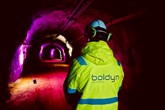The new age of mining
Published by Jess Watts,
Editorial Assistant
Global Mining Review,
The mining sector is undergoing a seismic shift. The industry is facing growing pressure from stakeholders to not only meet the increasing demand for critical materials, but to do so in a responsible, ethical, and sustainable way. At the same time, mining companies are navigating an increasingly complex geopolitical landscape. Meeting these demands and overcoming these challenges requires a new way of operating. At the heart of this evolution, inevitably, lies technology. From the initial steps of ore exploration to extraction and processing, emerging technologies are disrupting the entire mining ecosystem. This technological shift will define the future of the sector, and those organisations that successfully innovate will enhance their net present values and better balance competing demands.
Leading the way in this transformation is artificial intelligence (AI). From the first step of exploration and prospecting, AI can offer support. As AI devices can quickly process big data, the tools can identify possible mining sites with higher mineral potential more effectively than human surveyors alone. In fact, companies using AI in exploration have reported a 20 – 30% reduction in time and costs involved with mineral discovery.
Once the operation has launched, AI can deliver improved operational efficiency and safety. For example, AI-powered autonomous vehicles, which can also offer the advantage of being powered by green energy, are often used in hazardous areas to protect workers. This was successfully demonstrated by BHP’s Spence mine, which was BHP’s first fully autonomous site. The results speak for themselves: the Spence mine had zero incidents, and the autonomous operations reduced exposure to safety risks by 90%. Later in the mining process, AI can support with more accurate ore sorting, speeding up operations, maximising ore beneficiation, and reducing waste.
The use of digital twins and Internet of Things (IoT) sensors can add another layer of efficiency. By developing models of mine sites that use real-time geological data, engineers can simulate different mining strategies for optimal efficiency, sustainability, and safety. Digital twins can also be used to detect minor problems and prevent major problems, allowing for proactive maintenance measures to take place and reducing unexpected downtime. Workers can use wearable IoT sensors to monitor their health and detect exposure to dangerous gases or hazardous substances, which can alert them to any potential dangers. IoT devices can also be used to monitor environmental data, such as air and water quality, to ensure compliance with regulations.
Additionally, biotechnology is introducing a new dimension to mining innovations through the use of biomining, a process where microorganisms are used to extract metals from ore or waste materials. Biomining not only provides improved access to metals, but it can also be used to clean up contaminated mining sites, offering a more sustainable approach.
By utilising these innovations, not just on their own merit, but in combinations that unlock exponential additional value, the mining industry can achieve a new level of operational efficiency, safety, and sustainability. This marks the beginning of a new age of mining, one focused on smarter, more responsible practices.
Read the article online at: https://www.globalminingreview.com/technology-digitalisation/04042025/the-new-age-of-mining/
You might also like
Private networks, a myth or a solution to digital transformation in mining?
Mines pose extreme connectivity challenges. Jaakko Kuukka, Country Manager Nordics, Boldyn Networks, explains that dedicated 4G and 5G private networks are essential to meet those rising demand and power the industry’s future.


